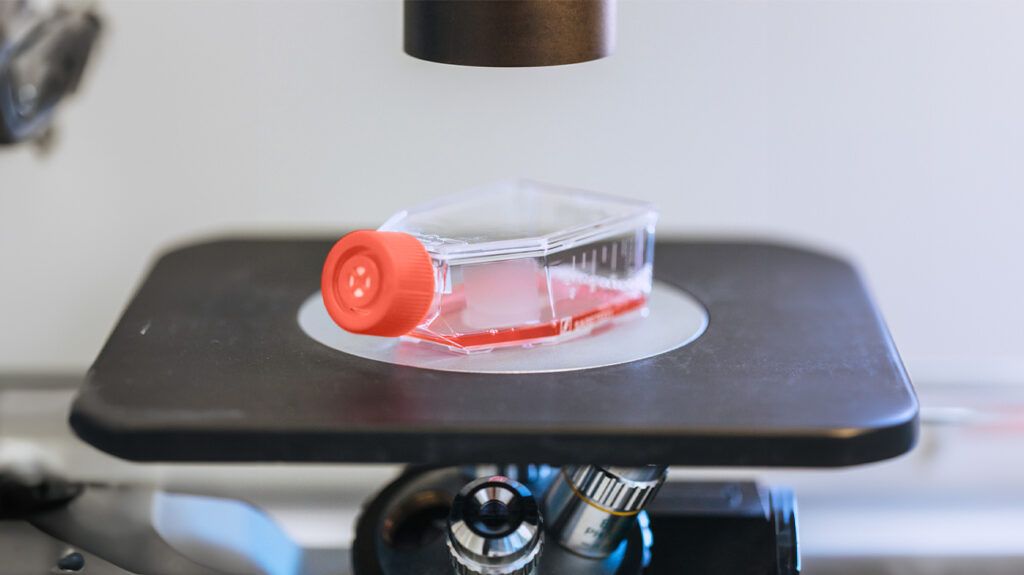Some human papillomavirus (HPV) tests check for mRNA E6/E7. E6 and E7 are proteins present in types of HPV viruses that carry a high risk of cancer. A positive test result indicates that a person has a high-risk form of HPV.
If a test detects mRNA E6/E7, it means the HPV virus is sending instructions to cells to create E6/E7 proteins. These proteins are involved in transforming healthy cells into cancerous cells.
The presence of mRNA E6/E7 in an HPV test does not necessarily mean a person has cancer. However, it means a person has a high-risk type of HPV, which can lead to cancer. A person may require further testing, monitoring, and treatment.
This article explains HPV mRNA E6/E7, what it means if a test detects it, and the next steps a person can take. It also looks at when to contact a doctor and answers some frequently asked questions.

A person may receive results from an HPV test that indicate the presence of HPV mRNA E6/E7.
mRNA refers to messenger ribonucleic acid. This acid is present in all living cells, and its
HPV mRNA E6/E7 refers to the instructions that certain types of the HPV virus carry, instructing the cells to create the E6 and E7 proteins.
The results of an HPV test may include “HPV mRNA E6/E7 detected.” This means that a person has a high-risk type of HPV that
The detection of HPV mRNA E6/E7 does not mean that a person has cancer. However, it indicates that they have a type of HPV that carries a risk of cancer.
According to the
Without treatment, these cells can progress to be cancerous over time. The NCI states that HPV is responsible for around 5% of all cancers and causes around 630,000 cancers globally per year.
According to the NCI and a 2022 review article, high-risk HPV infection accounts for:
- more than 99% of cervical cancer
- 95% of anal cancer
- 80% of head and neck cancer
- 63% of penile cancer
- 69% of vulvar cancer
- 75% of vaginal cancer
The Food and Drug Administration (FDA) has
If an HPV test detects HPV mRNA E6/E7, a healthcare professional will assess a person’s risk of developing cervical cell changes that could become cancerous.
Based on their assessment, they may advise a person to do the following:
- Retest: A person may want to return for another HPV test in
1 to 3 years . - Undergo a colposcopy: During a colposcopy, a doctor inserts a speculum into the vagina and applies a vinegar solution to the cervix. The solution helps the doctor see abnormal areas in the cervix, which they view using an instrument known as a colposcope.
- Undergo a cervical biopsy: In a cervical biopsy, a doctor removes a small tissue sample from the cervix to check for abnormal cells under a microscope.
If the results of these tests reveal high-grade cervical cell changes, which have a high risk of progressing to cancer, a doctor may suggest treatment.
Types of treatments
According to the
- Conization: This may involve a loop electrosurgical excision procedure, in which a healthcare professional removes abnormal tissue using a thin, electrified, wire loop. It can also involve cold knife conization, using a scalpel.
- Cryoablation: During cryoablation, a doctor freezes and destroys abnormal tissue with a cold probe.
- Laser therapy: This uses a laser to destroy or remove tissue.
- Total hysterectomy: A doctor may suggest a total hysterectomy, which involves the surgical removal of the cervix and uterus to remove advanced precancerous cells.
According to the
A person should also undergo HPV testing if they receive an abnormal Pap test result.
High-risk HPV
Some HPV-related cancers may cause symptoms, which can include bleeding, pain, and lumps. If a person has any of these symptoms around the genitals, mouth, or throat, they may want to contact a doctor.
How long does it take HPV mRNA E6/E7 to go away?
The immune system may clear an HPV infection within
However, the virus can remain if the immune system cannot clear the infection. Persistent high-risk HPV may require treatment to prevent or manage precancerous or cancerous cells.
Is HPV mRNA E6/E7 sexually transmitted?
HPV is
Does HPV mRNA E6/E7 detected mean cancer?
The detection of HPV mRNA E6/E7 does not mean a person has cancer.
The test results indicate that a person has a high-risk type of HPV that
HPV mRNA E6/E7 refers to a process of certain high-risk types of HPV, in which the virus carries messages instructing the cells to produce E6 and E7 proteins. These proteins are involved in transforming cells into cancerous cells.
A test result that indicates “HPV mRNA E6/E7 detected” means that a person has a high-risk type of HPV. They may require further testing and treatment to prevent or treat precancerous or cancerous cells.
High-risk HPV does not typically cause symptoms. Individuals may want to undergo routine HPV testing to screen for the virus.
